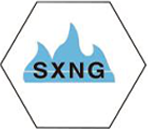
Dec . 03, 2024 11:33
Back to list
electric regulating valve
Understanding Electric Regulating Valves Function, Types, and Applications
Electric regulating valves play a crucial role in various industrial processes, regulating the flow of fluids with precision and efficiency. These valves are essential components in systems where accurate flow control is necessary, from water treatment plants to complex manufacturing facilities. In this article, we will explore the fundamentals of electric regulating valves, their types, working principles, and their applications across different industries.
What is an Electric Regulating Valve?
An electric regulating valve is a type of valve that uses an electric actuator to control fluid flow and pressure within a system. Unlike traditional valves that rely on manual operation or pneumatic control, electric valves can be automated and programmed, allowing for greater accuracy and efficiency. The primary purpose of these valves is to adjust the flow rate in response to varying system demands, ensuring optimal performance and resource utilization.
Types of Electric Regulating Valves
There are several types of electric regulating valves, each designed to meet specific needs in different applications. The most common types include
1. Globe Valves These valves are characterized by a spherical body shape and are often used in applications requiring precise throttling. Globe valves can provide excellent control over flow dynamics and are suitable for both high and low-pressure systems.
2. Ball Valves With a spherical closure element, ball valves are known for their durability and range of opening and closing cycles. They can be used for on-off control and also in regulating applications, though they may not offer the same level of precision as globe valves.
3. Butterfly Valves These valves are often used in large pipes due to their lightweight construction and fast operation. Butterfly valves have a circular disc that rotates to control flow and are typically used in applications where quick responses are required.
4. Plug Valves Similar in function to a ball valve, plug valves use a cylindrical or conical plug to control flow. They are known for their simplicity and durability and can be used in both throttling and on-off applications.
Working Principle
electric regulating valve

Electric regulating valves operate based on the input signals from a control system, such as a programmable logic controller (PLC) or a supervisory control and data acquisition (SCADA) system. The electric actuator interprets these signals and adjusts the valve position accordingly, altering the flow rate of the fluid. This process allows for real-time control and monitoring of system performance.
The integration of feedback mechanisms, such as position sensors, enhances the precision of electric regulating valves. These sensors provide information about the current position of the valve, allowing the control system to make necessary adjustments to maintain the desired flow rate or pressure.
Applications
Electric regulating valves are employed across various industries due to their versatility and efficiency. Some notable applications include
- Water Treatment In water treatment facilities, electric regulating valves help manage the flow of chemicals and water, ensuring that treatment processes are accurate and effective.
- HVAC Systems In heating, ventilation, and air conditioning systems, these valves maintain optimal airflow and temperature control, contributing to energy efficiency.
- Process Industries In the chemical and petrochemical industries, electric regulating valves regulate the flow of raw materials and finished products, ensuring safety and process integrity.
- Food and Beverage These valves are critical in maintaining hygiene standards and consistent flow rates in food processing applications.
Conclusion
Electric regulating valves play an integral role in modern industrial systems, enhancing control, efficiency, and safety. As industries continue to automate and optimize their operations, the demand for reliable and precise flow regulation will grow. Understanding the types, working principles, and diverse applications of electric regulating valves is essential for engineers and technicians who strive to implement effective fluid management solutions.
Next:
Latest news
-
Safety Valve Spring-Loaded Design Overpressure ProtectionNewsJul.25,2025
-
Precision Voltage Regulator AC5 Accuracy Grade PerformanceNewsJul.25,2025
-
Natural Gas Pressure Regulating Skid Industrial Pipeline ApplicationsNewsJul.25,2025
-
Natural Gas Filter Stainless Steel Mesh Element DesignNewsJul.25,2025
-
Gas Pressure Regulator Valve Direct-Acting Spring-Loaded DesignNewsJul.25,2025
-
Decompression Equipment Multi-Stage Heat Exchange System DesignNewsJul.25,2025

